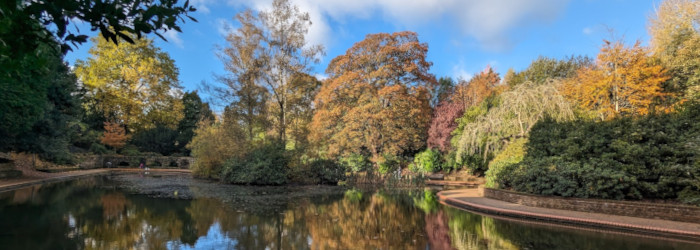
#1 Grosvenor Rocks
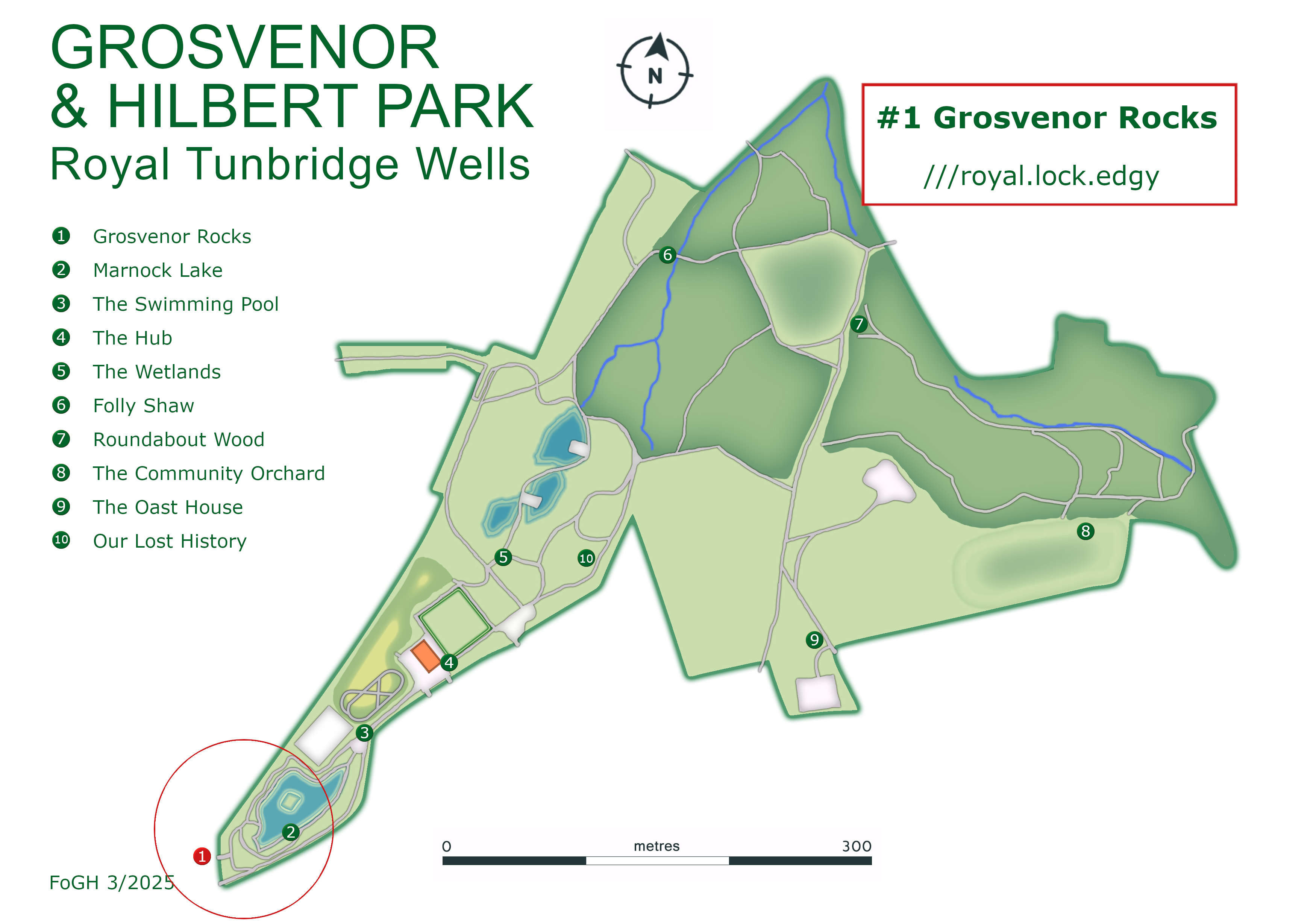
Our trail winds its way through the Park, highlighting different points of historical, natural and artistic interest. You can follow our route, or meander around the Park and create your own trail! Our recommended starting point is highlighted on the map. This point puts in what used to be the industrial area of Tunbridge Wells.
About the route: Total length: around 2km (1.25m) depending on your exact route.
Accessibility: only stages 7 and 8 are not pushchair and wheelchair friendly (alternative routes are available).
Grosvenor & Hilbert Park: A Brief History
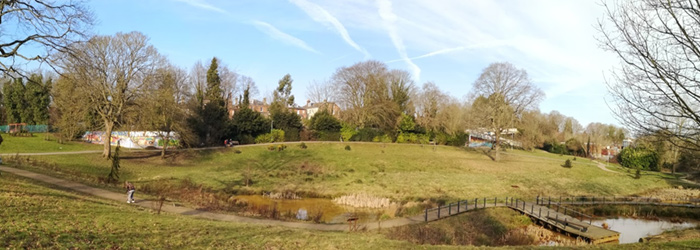
Grosvenor Recreation Ground was opened in 1889 and was the first public park in Tunbridge Wells. There is a beautiful lake with unusual 'Dripping Wells', a hundred-year-old bowling green, a brand-new playground and a wetland area. It was the brainchild of the town's first Mayor, John Stone-Wigg, who paid for famous landscape designer Robert Marnock to plan the layout.
Hilbert Recreation Ground was added in the 1930s and contains the playing fields, an historic Kentish oast house, two ancient woodlands, a skate park and a thriving community orchard. Formerly part of a small farm, the 26 acres (10.5ha) of land was donated by Councillor Edward Jeffery Strange and named after his mother Lydia Hilbert.
Together, they form a park with diverse habitats and a range of amenities for all ages - truly a People's Park!
Just For Kids
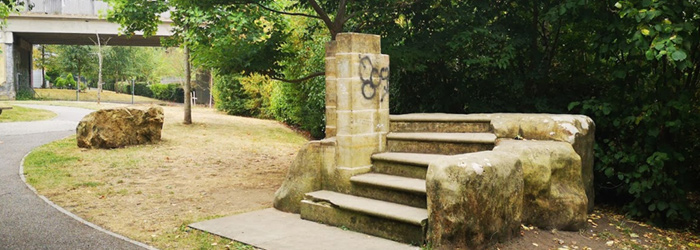
Can you see the steps to nowhere? They are called 'Grosvenor Rocks'. If you look closely, you will see some pictures and words scratched into the rocks. Can you find the bee?
Grosvenor Rocks: History
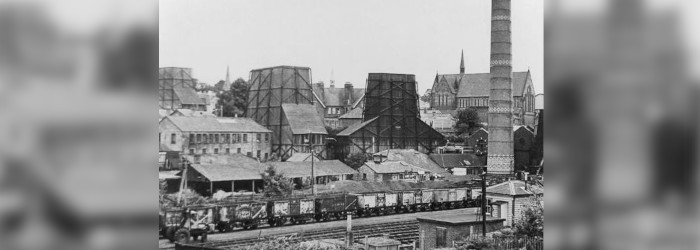
Where you are standing now was once the industrial heart of Tunbridge Wells. Initially the area was a quarry, where the stone was used for buildings such as Trinity Church and the other Decimus Burton houses around Calverley Grounds. The quarry later became three reservoirs and a waterworks, utilising the Jackwood Spring that ran through the area.
When the first trains arrived at Tunbridge Wells in 1845, they stopped at Jackwood, which was just beyond Grosvenor Bridge. A year later, after the tunnel was completed this became the Goods Station. In the days before road haulage, most goods were brought in by train, so the area was incredibly busy. There were numerous sidings and two goods sheds, where goods were unloaded before being carted away with horse-drawn transport.
Grosvenor Rocks: Art

Look across the 'grassy knoll' and you will see an unusual structure - this is Grosvenor Rocks. Installed in 2013 by 'We Made That' it celebrates the quarry that was originally situated in this area.
This is part of a series of art installations along the cycle path. It's a reminder that the area was formerly a quarry, supplying the stone for the early expansion of the town. Nine pieces of sandstone were selected from a quarry in West Hoathly. In April 2013, local people wrote and drew on the stone. These contributions were permanently carved into the stone by letter cutter Bridget Powell and apprentice stonemason Amelia Morrison.
Street art walls
Underneath Grosvenor Bridge the walls have featured murals by Humor, a Tunbridge Wells-based street artist gaining increasing recognition. In addition, they are used by local street artists to express themselves.
What Next: Marnock Lake
